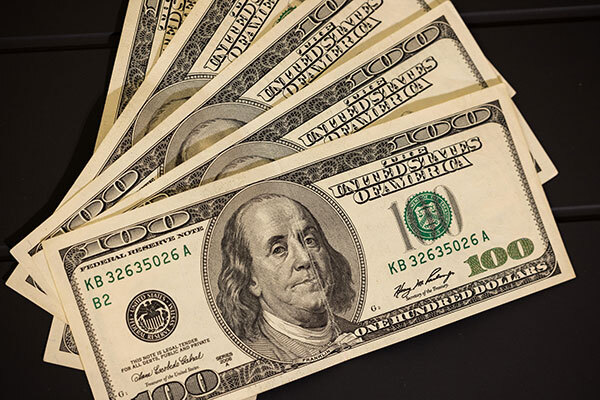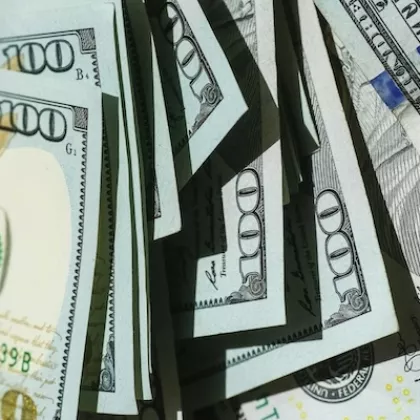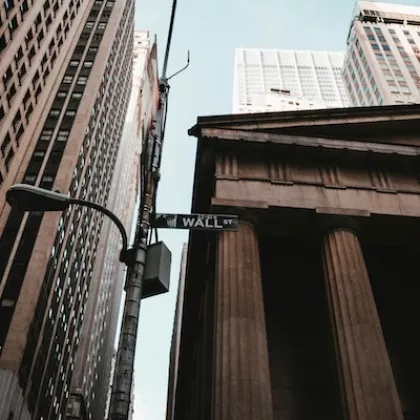Solving the inflation problem

Solving the inflation problem
July 8, 2022 | By Narayana Kocherlakota
The problem.
In the summer of 1980, the U.S. inflation rate reached 11%. It’s not surprising that economists refer to this period as the peak of the “Great Inflation.”
Until recently, that kind of experience seemed like ancient history. The Federal Reserve (the Fed) aims to keep inflation close to 2%, and remarkably, it has accomplished that mission over the past 25 years.
From the beginning of 1996 through the end of 2020, the inflation rate averaged close to 1.8% per year. Even more amazingly, it never rose above 4% throughout those 300 months. And, except for a brief dip in 2009, it never fell below 0%.
In January 2021, the inflation rate over the preceding year was only 1.4%. But the situation has changed dramatically since then. As of May 2022, the inflation rate was over 6%. And, as of mid-June, the Fed does not expect inflation to fall back to 2% for at least three years.
Causes.
Why are prices suddenly growing so rapidly? There are several hypotheses, which I assess below. This assessment is largely guided by the so-called New Keynesian Phillips Curve, developed in the mid-1990s by a variety of macroeconomists.
I’ve put the hypotheses that don’t seem to work in red, and the ones that seem promising in green.
Too much stimulus: COVID-19 hit the U.S. in full force in March 2020. Congress responded by passing three large spending bills in 2020 and 2021, two under President Trump and one under President Biden. At the same time, the Federal Reserve cut interest rates to near zero in March 2020 and kept them there for two years. All of these interventions were designed to encourage households to spend, thereby supporting hiring.
More than a few critics blame the actions of Congress and the Fed for the high rate of inflation. But this “too much stimulus” hypothesis doesn’t hold up to scrutiny.
Stimulus policies only generate overly high inflation if they create too much demand relative to available supply. But we should see the imprint of that excess demand in surprisingly low unemployment and high real (that is, net of inflation) wage growth. The unemployment rate in May was 3.6%, essentially the same as it was immediately before the pandemic hit in early 2020, when inflation was under 2%. Similarly, real wages[1] in May were essentially the same as in early 2020.
To sum up, this hypothesis doesn’t seem to work. There aren’t signs in the labor market of having a lot more excess demand compared to early 2020.
Too much government paper: From the end of 2019 until the end of 2021, the Federal Reserve nearly doubled the money supply.[2] The total public debt went up by more than 25%. That’s a big increase in the amount of money and government promises to money. To many, it’s the obvious cause for a large increase in the prices of goods relative to dollars – that is, in the inflation rate.
But, again, the data doesn’t support this viewpoint. These kinds of increases in money and debt can only matter if the public perceives them to be durable – that is, unlikely to be reversed in the longer-term. In that case, though, we should see a rise in longer-term inflation expectations (as revealed, for example, through government bond yields). It is true that these measures have gone up since Covid hit in early 2020 – but only by a half-percent or so.[3]
Supply shocks/markup shocks: We can always divide prices into two components:
Price = Cost + Markup
From this accounting perspective, prices can be high because costs are high or because markups are high. There are reasons to believe that both factors are currently at work. In terms of the former, input costs and distribution costs have both risen sharply because of disruptions in trade and production generated by COVID-19 and the Russian attack on Ukraine.
But despite these run-ups in their costs, firm profits have risen by over 25% (net of inflation) since late 2019.[4] This evidence suggests that their markups have also gone up. Obviously, firms aren’t charging high prices because of a sudden attack of greed. Rather, firms seem to be able to sustain high prices because of a widespread decline in product market competitiveness associated with COVID-19 and public health restrictions.
Solutions.
I consider two possible solutions to the inflation problem. The first is traditional and focuses on the demand side. While grounded in Econ 101, the second approach is more novel and focuses on the supply side.
Interest rate hikes: As noted above, the Fed is charged with keeping inflation at close to 2%. It is aiming to achieve this objective through monetary policy tightening – that is, through a series of interest rate hikes. The thinking is that, faced with higher interest rates, households will cut back on spending and borrowing. That fall in demand will, in turn, give firms less pricing power and thus lower inflation.
This approach is a standard one. But it is known to have large costs. The lower consumer demand may well slow inflation, but it will also lead to higher unemployment as firms cut back on hiring. These anticipated unemployment effects of Fed monetary policy tightening is exactly why we hear so much concern about a recession in the next year or two.
It is important to emphasize too that the unemployment burden of the Fed’s fight against inflation has an unjust racial tilt. In most recessions, the unemployment rate for African-Americans rises by nearly twice as much as that of whites. As a result, monetary policy tightening that leads to a recession for white America may well induce a depression for Black America.
Production subsidies: The Fed’s use of interest rate hikes to fight inflation is, in some sense, predicated on the notion that high inflation is being caused by excessive demand. But, as we saw earlier, it seems like the current high rate of inflation is actually being caused by elevated costs and markups. This analysis suggest that it would be better for the inflation fight to focus on cost reduction, rather than demand reduction.
How can policymakers shrink costs for businesses? There’s little that the Fed can do. But Congress could introduce temporary output subsidies that make payments to businesses per incremental unit of production. These subsidies reduce the cost of production and lead firms to set lower prices. And, unlike interest rate hikes, these kinds of subsidies should incentivize hiring and so lead to higher employment.
It may seem counterintuitive to subsidize businesses when their profits are high. But excess profits are a sign that output is being kept too low by insufficient competition. The Econ 101 fix for this problem is to incentivize the creation of more output. The government should use other tools to deal with the potentially unwelcome effects of high corporate profits, such as increased inequality.
The bottom line.
Inflation stands at a 40-year high. The Fed is planning to address this problem through interest rate hikes that may lead to untoward unemployment increases. But inflation in 2022 does not seem to have been caused by excess demand. Rather, it seems to be a product of changes in supply conditions, including declines in firm competitiveness. Instead of relying on the Fed, Congress should seek to reduce inflation by lowering business’ costs through subsidies to production.
Of course, Congress rarely listens to academic economists like me. So, I expect that the Fed will take the lead in fighting inflation, striving to avoid throwing the country into recession. Over the next few years, all eyes will be on the Fed to see how it all pans out.
[1] As measured by average hourly earnings of all private employees, corrected for Consumer Price Index inflation. The employment cost index – which corrects for changes in workforce composition by occupation - shows a 2.2% decline in real wages relative to late 2019.
[2] As measured by the monetary base.
[3] As measured by the five year-five year forward expected inflation rate reported by the Federal Reserve Bank of St. Louis in FRED.
[4] As measured by the Bureau of Economic Analysis through Corporate Profits After Tax (without inventory valuation adjustment or capital consumption adjustment using a Consumer Price Index correction for inflation. Pre-tax profits have risen similarly.

Narayana Kocherlakota is a Professor of Economics at Simon Business School.
Follow the Dean’s Corner blog for more expert commentary on timely topics in business, economics, policy, and management education. To view other blogs in this series, visit the Dean's Corner Main Page.











